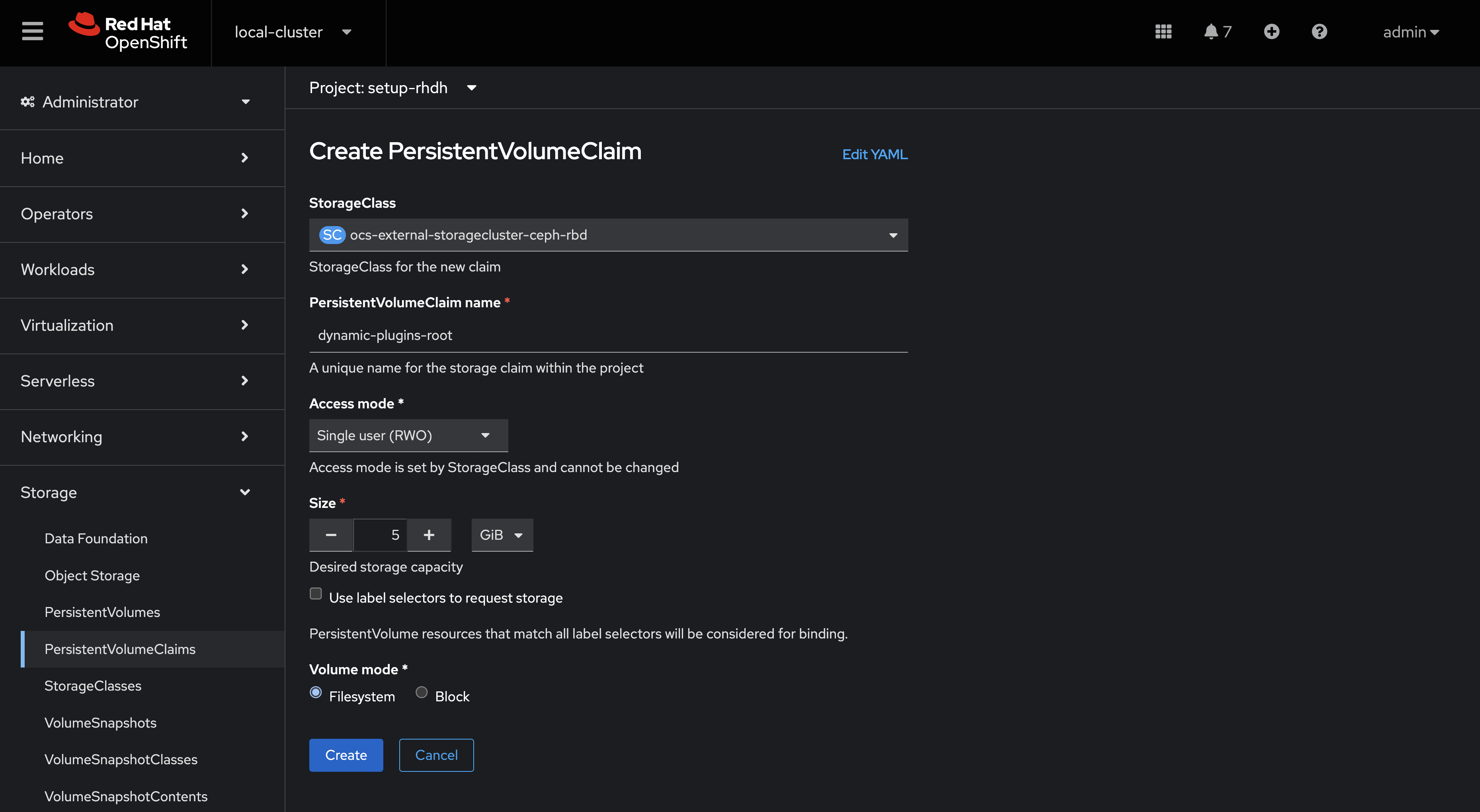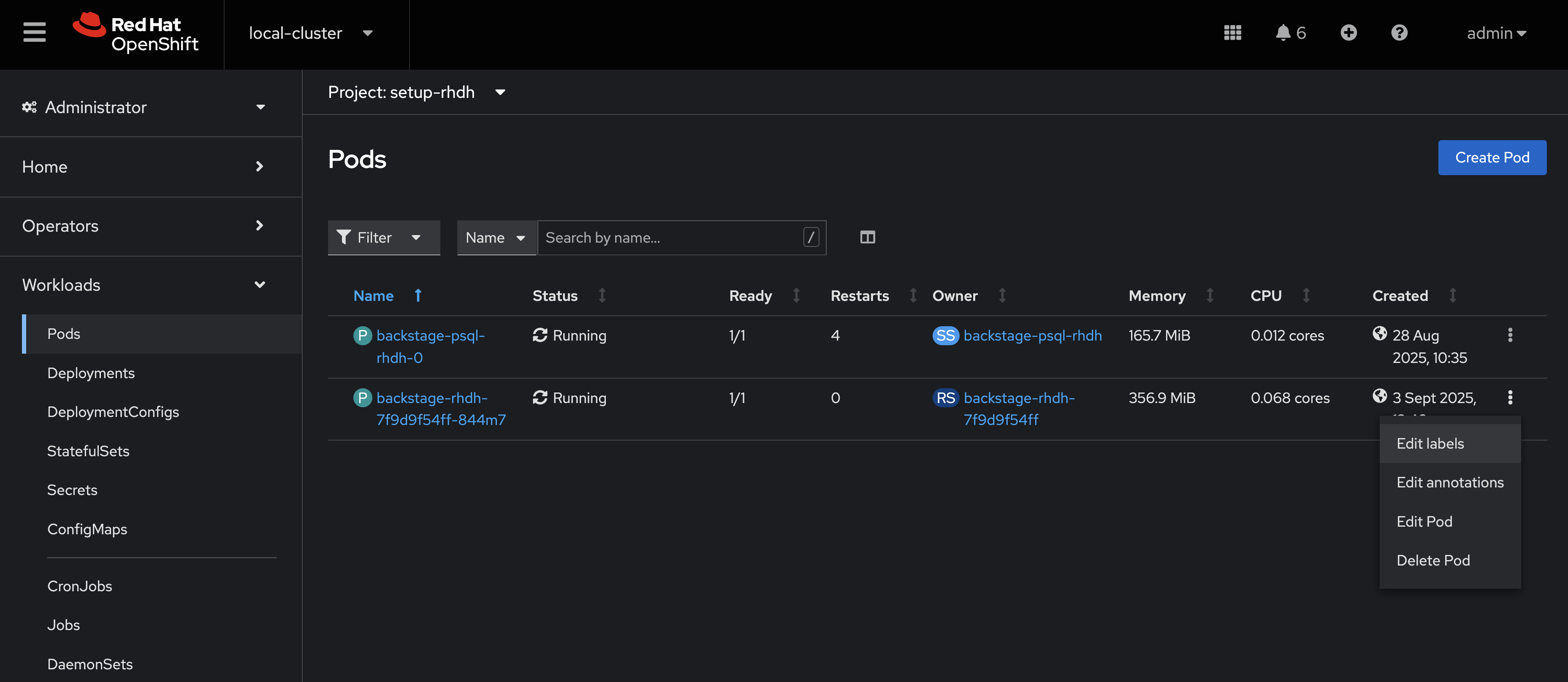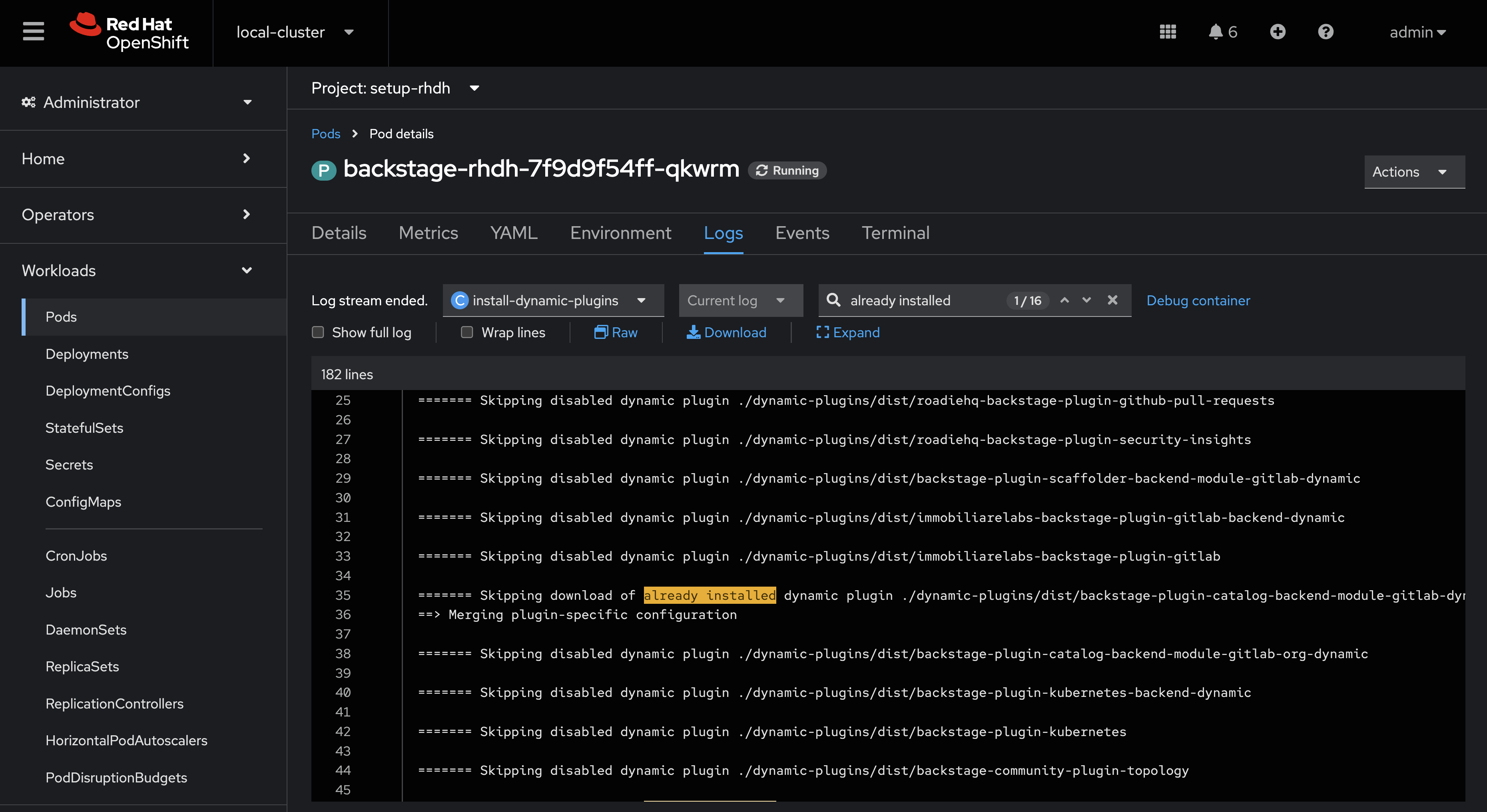Enable Dynamic Plugin Caching
You might have noticed that the install-dynamic-plugins container can take a few minutes to run. Dynamic plugin caching improves the startup performance and reliability of your Red Hat Developer Hub deployment by storing plugin packages in a persistent volume. This provides several benefits:
-
Faster deployments: Plugins are cached locally and don’t need to be downloaded when pods start
-
Reduced bandwidth consumption: Plugin packages are only downloaded once and reused across deployments
-
Improved reliability: Reduces dependency on external registries during pod startup
-
Better resource utilization: Reduces CPU and memory usage during plugin installation by avoiding repeated downloads
Without dynamic plugin caching, the Red Hat Developer Hub downloads and installs plugins fresh with each pod restart. This process can be slow and bandwidth-intensive, especially in environments with many plugins and frequent deployments.
Create a PersistentVolumeClaim
First, create a PersistentVolumeClaim that will store the cached plugin packages. This PVC will be mounted into the Red Hat Developer Hub pods to provide persistent storage for downloaded plugins.
-
Navigate to Storage > PersistentVolumeClaims in the OpenShift Web Console.
-
Ensure the
setup-rhdhproject is selected. -
Click the Create PersistentVolumeClaim button and select With Form.
-
Use the following settings:
-
StorageClass: Use the default value
-
Name:
dynamic-plugins-root -
Access mode: Single-user RWO
-
Size: 5Gi
-
Volume mode: Filesystem

-
-
Click Create to create the PersistentVolumeClaim.
The 5GiB storage allocation provides sufficient space for caching multiple plugins while maintaining reasonable resource consumption. The ReadWriteOnce access mode is appropriate since the cache will be accessed by a single Red Hat Developer Hub pod at a time.
Patch the Red Hat Developer Hub CR
Next, update your Backstage Custom Resource to mount a volume. This configuration uses the Red Hat Developer Hub Operator’s patch functionality to modify the underlying Deployment.
-
Navigate to Operators > Installed Operators in the OpenShift Web Console.
-
Click on Red Hat Developer Hub.
-
Select the Backstage tab, then click on your
rhdhinstance. -
Click the YAML tab to edit the resource.
-
Add the following
deployment.patchconfiguration to your Backstage CR’sspecfield:spec: # Add this deployment patch configuration deployment: patch: spec: template: spec: volumes: - $patch: replace name: dynamic-plugins-root persistentVolumeClaim: claimName: dynamic-plugins-rootDo not remove or overwrite existing sections. Only add the new
deploymentfield to the existingspecwith other the fields insidespec.The
$patch: replacedirective tells the operator to replace the existingdynamic-plugins-rootvolume (which is an emptyDir by default) with a PersistentVolumeClaim-backed volume. This ensures that plugin cache data persists across pod restarts. -
Click Save to apply the changes.
Verify Plugin Cache Configuration
After updating the Backstage CR, a new pod will be created with the persistent volume mounted for plugin caching.
-
Navigate to Workloads > Pods and select the latest Backstage pod.
-
Click the Details tab and scroll down to the Volumes section.
-
Verify that the
dynamic-plugins-rootvolume shows a PersistentVolumeClaim source instead of EmptyDir. -
Select the Events tab and you’ll notice an event that references
AttachVolume.Attachfor your new volume.
Next, you’ll observe just how much faster a new pod starts with plugin caching enabled.
-
Wait for the new deployment’s
backstage-backendcontainer to start. -
Return to the Workloads > Pods list and locate the
backstage-rhdhpod. -
Click the three dots to the right of the table and delete the pod - a new pod will immediately be created to replace the missing Backstage pod.

-
Visit the logs for the new pod and you’ll find that the install-dynamic-plugins container reports that it’s not downloading previously installed plugins.

Did you notice how much faster the plugin installation process has become?
With dynamic plugin caching enabled, subsequent deployments will continue to use cached plugin packages, significantly improving startup performance and reducing external dependencies during pod initialization.